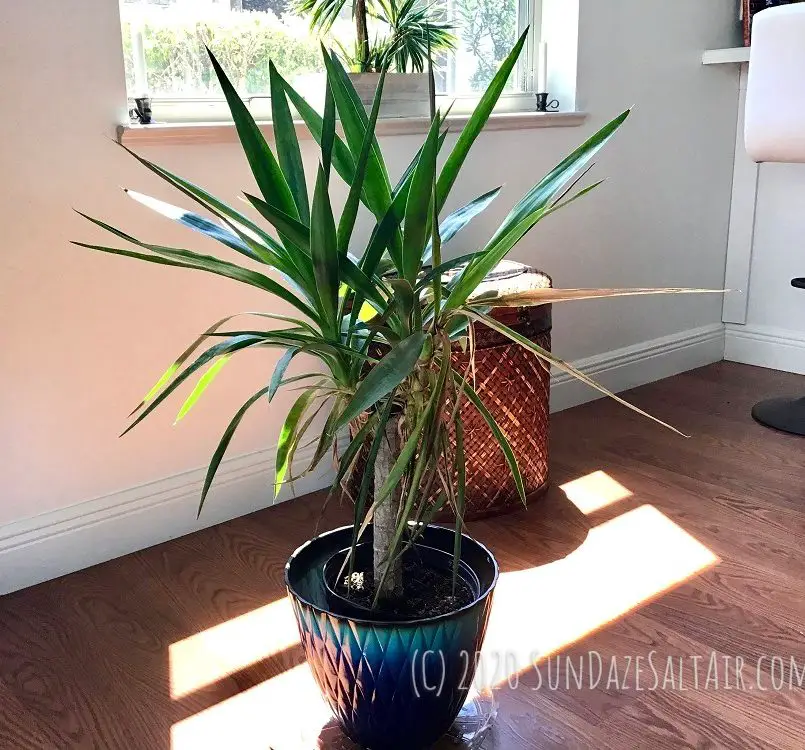
Yucca Plant Rescue: Why Is My Yucca Plant Drooping? How To Revive A Drooping Yucca Plant (With Pictures)
Why Your Yucca Is Falling Over & How To Fix It
Reasons Why A Yucca Plant Would Droop
One day I noticed that all of a sudden my yucca plant was no longer sturdy and upright but was instead looking droopy and leaning over - quite severely actually, as you can see in the first picture below. Since yucca plants are known for being hardy and requiring minimal maintenance I knew there was something very wrong. A healthy yucca will not start drooping or leaning just because it grows larger and more top-heavy.
A yucca plant with healthy stems can easily withstand the pressure of additional weight so, given the state of my plant, it was imperative that I diagnose the cause of my yucca's distress quickly. There were two primary possible culprits - the amount of water my yucca was receiving and the amount of sunlight it was exposed to.
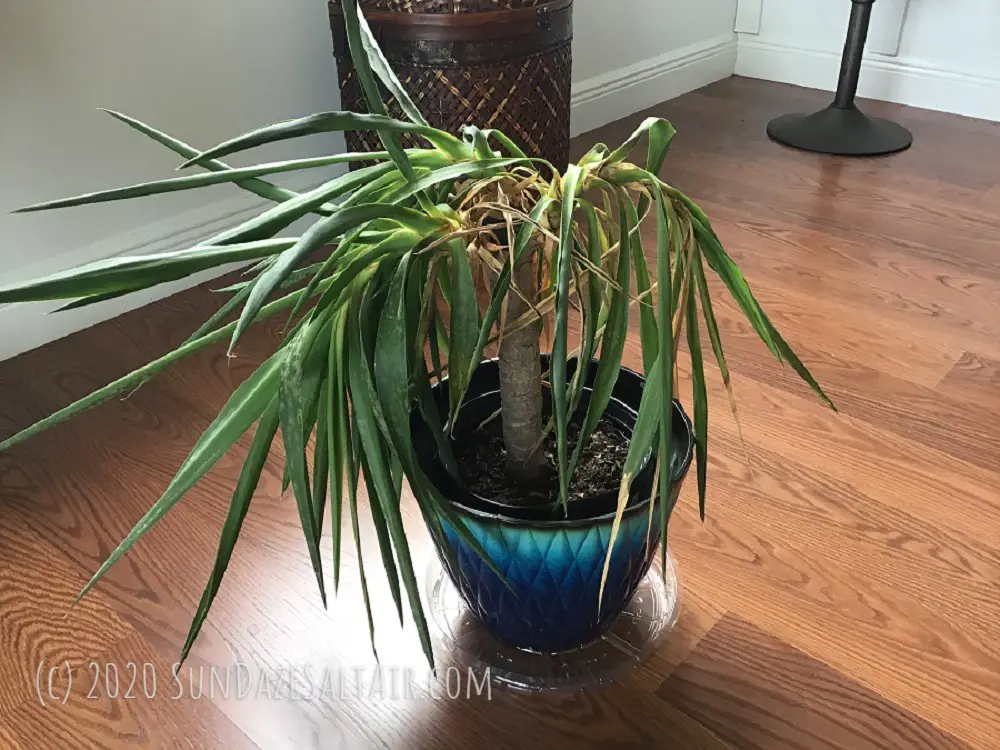
How To Fix A Drooping Yucca Plant
First, let's determine the cause of your yucca's drooping state, and then take some immediate corrective measures. Whether your yucca is drooping and bending due to overwatering, underwatering, insufficient sunlight, or physical distress, shock or temperature change, it is telling you that it no longer has the energy to support its own weight. Keep reading for guidance to diagnose and treat your yucca's specific problems.
TIP! Find out how to quickly & easily grow a brand new yucca from yucca side shoots by following these simple instructions...
**Decorate a room with high ceilings for Christmas & the holidays here...
How Much Water Do Yucca Plants Need?
Signs Of Overwatering & Underwatering Are Often The Same
Some of the initial signs that may point to overwatering are drooping, wilting and yellowing leaves or stems... Which, coincidentally, also happen to be signs of underwatering as well. Therefore, in order to make a proper diagnosis, be sure to check out the moisture content of the soil using the "touch test." In the case of my yucca, all of these symptoms were on full display.
However, upon feeling the soil, I knew from its dry, crumbly texture, that it was clear this was not a case of too much water. I was also well aware that my yucca, like other succulents, could not only subsist on less water but actually prefers less water. So, if anything, my tendency was to underwater, not overwater my yucca. Not to mention the fact that my watering schedule had been rather sporadic and irregular lately.
For more information on exactly how often you should water your yucca depending on the season and growth pattern, scroll down to the section below titled, "How Often Should You Water An Indoor Yucca Plant?"
Avoid Overwatering & Root Rot - Succulent Care 101
Succulents, like their close relation the cactus, are desert plants well-known for requiring less water and usually only when the surrounding soil is bone dry to the touch.
This self-sufficiency is due to the fact that succulents are able to store water in their leaves, stems or roots in order to withstand longer periods of drought. Bottom-line, if the soil of your yucca plant does not feel sandy, dry or crumbling, do not water it, as it likely has sufficient water stored. Again, since I had been very conscious not to over-water my yucca, the chances of root rot, in which the plant's roots are damaged from excess water, were slim to none, and I was able to easily rule this possibility out.
**Are you paying too much for homeowners insurance...? Click here to learn 8 smart, simple ways to significantly reduce your homeowners insurance premiums right now...

Signs Of Root Rot & How To Prevent & Repair Root Rot
Always keep in mind that yucca plants thrive in dry conditions. Since yucca plants are highly susceptible to stem and root rot from overwatering, be sure to stop watering right away if you notice any signs of droopy, yellow leaves, and especially, brown, mushy roots and/or a soft trunk as these are signs of obvious rot. If you do notice these signs and suspect that root rot is the source of your yucca's ailing condition, here is some guidance to follow.
If the roots are damaged as a result of overwatering, this indicates the roots have begun to rot and your best bet is to keep the plant as dry as possible to see if the roots may begin to recover. If root rot has set in, cut the trunk directly above the area that is rotting. Any roots should appear light in color, not brown, and the rooted end can then be re-potted. Keep any watering minimal until your yucca plant is recovered and roots are established. Be sure to place your potted yucca in a sunny, dry location to avoid further rotting in the future.
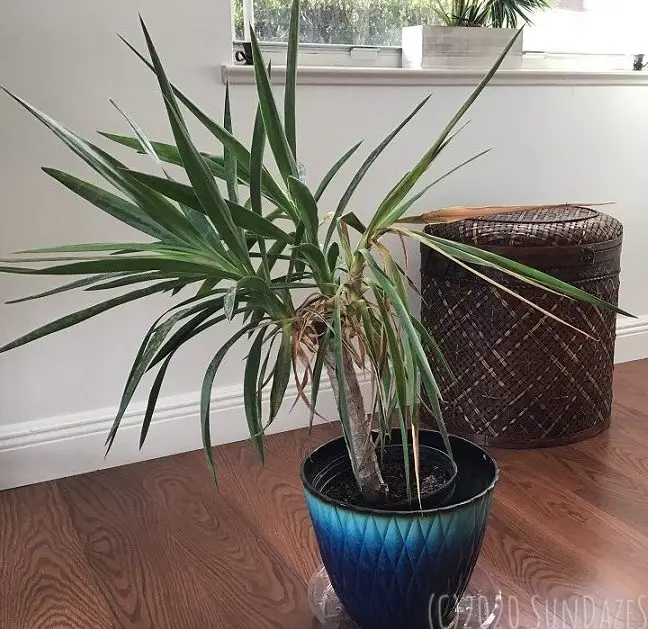
Avoid Underwatering Your Yucca - A Common Mistake To Make
On the other end of the spectrum, as stated previously, not enough water or drought can produce the same symptoms of drooping and wilting stems and yellowing leaves as too much water. Although yuccas, as succulents, are very drought-tolerant, which makes them excellent low maintenance indoor plants, it is easy to take this too far, and before you know it you have neglected your yucca's water requirements.
Yuccas, for all their self-sufficient ability to store water, still need periodic watering especially during prolonged dry spells and hot weather. Thus, do not take their drought resistance so literally because, especially as houseplants, they still rely on you to provide the occasional watering to sufficiently quench their thirst.
Discover How to Grow Orchids on Trees...
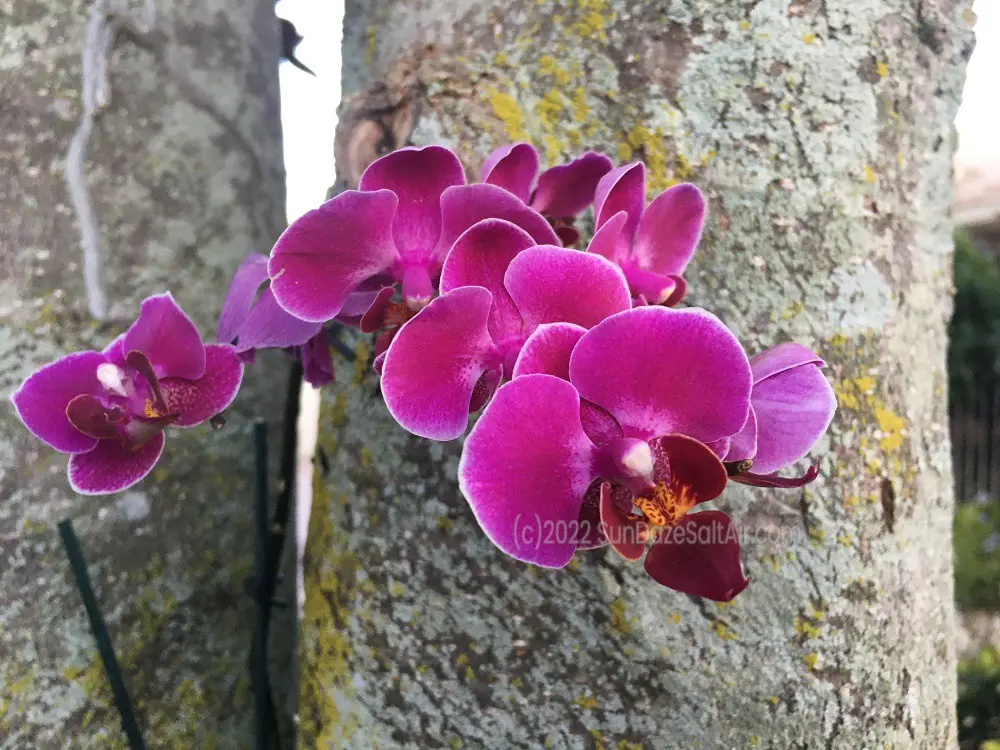
How Often Should You Water An Indoor Yucca Plant? Change With The Seasons
An established yucca will probably only need to be watered at most once a week during its peak growing season in spring and summer. Starting in the fall, as its growing period winds down and days get shorter, you will then want to reduce the amount of watering you do to once every two to three weeks, especially in the dormant winter season.
Use the "touch test" to monitor the moisture content of the potting soil, and observe any changes in your yucca's appearance to modify your watering routine as needed.
As always, be sure that you are providing excellent drainage for your yucca plant by using an appropriate potting mix with plenty of coarse particulates, such as a cactus or succulent potting mix, which will encourage swift and efficient draining.
The Droopy, Sad Appearance Of An Underwatered Yucca Solved With A Simple, Rejuvenating Solution
In the case of my yucca, I realized that I had not been keeping to a regular watering schedule and had somehow inadvertently neglected to water my plant in at least a couple of weeks. The result, as you can see in the accompanying photos, was the droopy, sad state and appearance of my plant. Feeling how dry the soil was to the touch, I decided to give my yucca some TLC in the form of a good-soaking in a well-drained pot, and observe any changes over night and into the next few days.
Sure enough, almost immediately, by the next morning, I observed my once drooping, leaning yucca start to straighten up and look revitalized. You can see this transformation occur in the photos accompanying this post. The only variable that I changed was the water that my plant received, so I attribute any improvement in health and vitality to my yucca receiving water it sorely needed. Because of the almost immediate results I saw in the condition of my plant, I am confident that my yucca was severely dehydrated from lack of water, and hydration was the solution it needed.
Is Your Yucca Getting Enough Sun?
As a native of southern Mexico and the desert Southwest, all yuccas require abundant sunlight, and that usually means no less than six hours of bright, full sun. An insufficient dose of daily sun will eventually cause your yucca to wilt and droop as it gradually declines in health and vitality. If you notice these signs, along with the fact that your indoor yucca is in a dim or low-light area where it receives minimal sunlight exposure, try moving your plant so it is no more than 3 to 5 feet from a bright, well-lit window, and see if your yucca improves. A window with southern exposure would be ideal for these sun-loving plants, particularly when natural light is at it's weakest during winter.
You will also want to avoid placing your yucca in a dim or low light location as it can exacerbate your yucca's chances of rotting, a condition your yucca is especially prone to when indoors in dim or humid places.
What Is This Chalky Dust On My Yucca Plant? Powdery Mildew - A Consequence Of Watering & Inadequate Sunlight
If you notice a chalky textured dust coating your yucca plant leaves you may be experiencing powdery mildew, also known as one of the most common fungi to strike indoor plants, including your yucca. While it may seem dire, fear not! Powdery mildew is relatively easy to treat now that you have accomplished the important step of identifying it.
One thing you must do is change the conditions surrounding your yucca as this is likely what led to the problem in the first place. Most likely your potted yucca was in a location that didn't receive adequate natural light or ventilation. These factors, combined with your yucca watering routine, likely created the overly moist conditions conducive to fungal growth.
Relocate Immediately
Immediately relocate your yucca plant to a well-ventilated area that receives plenty of indirect sunlight. Actually, it may be beneficial to let your yucca receive some direct sunlight for a little while to help kill the fungus and speed up the drying out of these overly moist conditions. Placing your yucca plant in front of a bright window can do the trick, while also allowing your yucca to receive some instant fresh air circulation by an open window.
Prune, Clean & Disinfect Any Powdery Mildew ASAP
Proceed to also remove any infected or dead or dying brownish leaves from your yucca by cutting them off with pruning shears or scissors, and dispose of them immediately. This will remove a major source of the fungus growth, so from now on try to do this as soon as your notice decaying leaves which could help avoid a repeat of fungus issues in the future.
Next, make sure to clean and disinfect any remaining leaves by combining one part of a mild hand soap to nine parts water, and wipe down the individual leaves with this solution. Follow up with a cloth just soaked in water to remove any further debris, residue or soap. Follow that with a wipe of a clean dry towel to prevent wet leaves and further decay.
Repot To Eradicate Any Signs Of Fungal Growth or Powdery Mildew
Lastly, to ensure all fungal issues are completely eradicated, you should repot your yucca plant into a sterilized container with fresh new soil potting mix. Ensure drainage is adequate by adding an inch or so of gravel or small rocks to the bottom of the pot prior to planting.
Change In Growing Conditions, Physical Damage Or Shock
A sudden change in a yucca's growing conditions such as through repotting or transplanting your yucca or even just from experiencing an extreme temperature change can result in physical changes to your yucca as the plant goes into "shock" from the sudden environmental change. Therefore, avoid any of these drastic changes wherever possible. In the case of my yucca however, none of these factors applied as I did not initiate any changes in my yucca's growing conditions or environment.
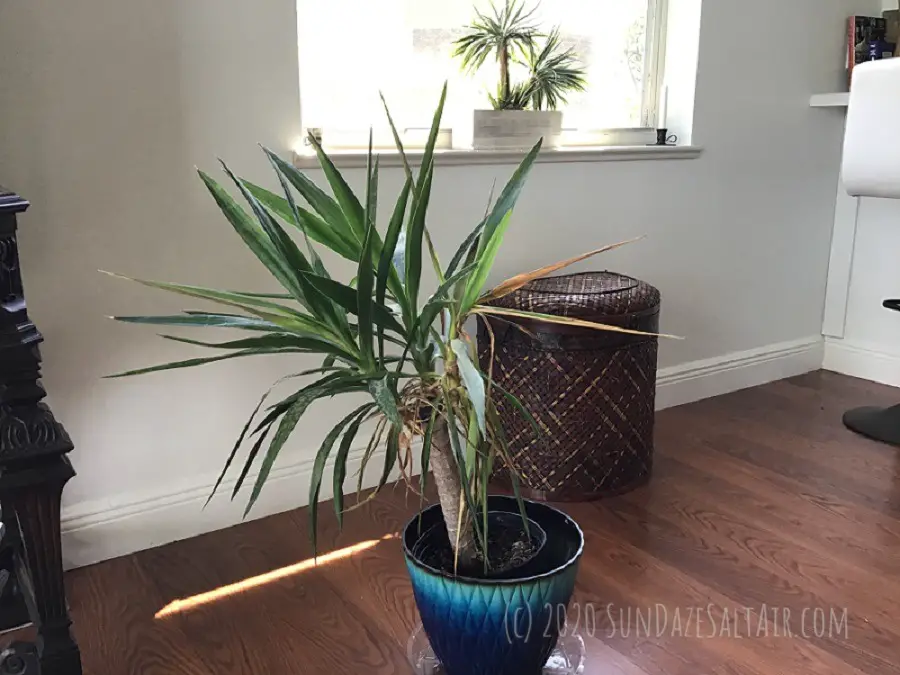
Transplanting Your Yucca Using Appropriate Soil
If you do transplant your potted yucca, be sure to use gritty cactus or succulent potting mix and plant it in a pot that allows for an inch or two of space between the roots and the sides of the pot. Cactus or succulent potting soil is able to support cacti and succulents by replicating the arid desert soil conditions to which they are native, holding necessary moisture and nutrients while providing optimal drainage to remove excess water and prevent root rot. And, of course, always allow the top couple of inches of soil to dry before watering your yucca.
More Tips On Avoiding Shock When Repotting A Yucca Plant & Recovery From A Change In Growing Conditions
Don't try to transplant established outdoor yuccas as they will already be larger and well rooted in their soil, so any attempt at transplanting will likely cause damage or shock to the plant.
Even with a plant that is in shock, hopefully, the change in growing conditions, whether from repotting or transplanting, did not cause irreversible damage and, in time, with proper care, the plant will adjust and recover.
If extreme temperature changes occurred, be sure to place your yucca in a location to avoid such extremes in the future. Keep the temperature consistent and remember that yuccas thrive in warm but dry air so maintain a warm but low humidity climate in your home for ideal yucca growing conditions.
After you have revived your yucca, learn how you can quickly and easily grow a brand new yucca from its side shoots here.
Conclusion: Follow A Simple & Low Maintenance Routine For A Healthy, Thriving Yucca Plant & Rejuvenate As Needed
Ultimately, I concluded that the wilting, drooping and leaning my yucca was displaying was caused by underwatering. While much of the attraction to succulents, other than their cool abstract art looks that can resemble everything from hearts to brains to swords (in the case of the yucca), is the succulent's low maintenance appeal, you can't take your succulent for granted. When you see "succulent" on your plant care tag you think, "Yay! Low maintenance! I hardly have to do anything!" Particularly for the busy or novice home plant grower, this can easily translate to "no maintenance" and you get too complacent. Before you know it, you are treating your new plant like a piece of furniture rather than the living being it is... until you see your yucca in obvious distress.
Prevent this by following these simple yucca care and maintenance tips, including a simple watering routine. If you do "slip" and allow your yucca to fall into neglect, just follow these easy guidelines to revitalize and rejuvenate your yucca, and in no time, your yucca will be back on its way to good health and beauty.



You May Also Like
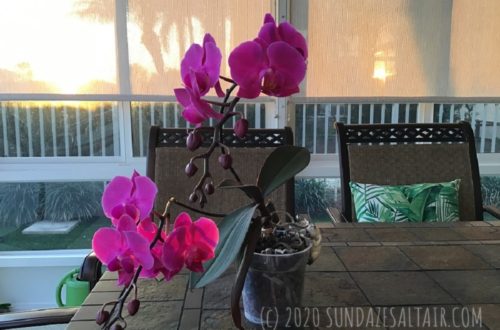
How To Trim An Orchid’s Dead Roots & Why You Should: A Step-By-Step Guide With Pictures
March 4, 2021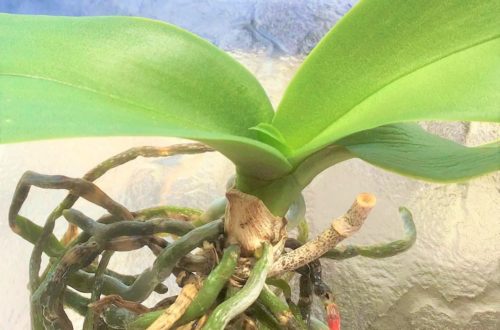
What Do Red Root Tips On An Orchid Mean? Why Your Orchid Has A Red Root Tip, & Should You Be Worried?
August 18, 2021
